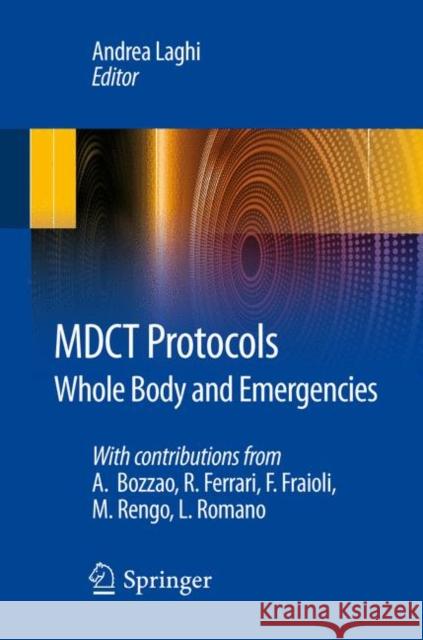MDCT Protocols: Whole Body and Emergencies » książka
MDCT Protocols: Whole Body and Emergencies
ISBN-13: 9788847024021 / Angielski / Miękka / 2011 / 253 str.
Multidetector-row computed tomography (MDCT) has become a fundamental imaging technique for the study of many anatomical districts in different clinical situations, as it provides a fast, reliable, and accurate simultaneous evaluation of different organs, including parenchyma, hollow viscera, vessels, and bony structures. It has also equipped the radiologist with the ability to explore areas that in the last decade were largely ignored by CT, especially the coronary arteries and the colon, and to limit invasive diagnostic tests (e.g., catheter angiography) to those cases in which interventional procedures are required. The examination quality and the consequent diagnostic accuracy of MDCT are the results of an optimized study technique, which nonetheless needs to be adapted to the particular clinical situation of the patient, while bearing in mind the radiation exposure. Another fundamental parameter in the optimization of MDCT is the protocol for the intravenous injection of iodinated contrast material; in these studies, multiple variables, some modifiable by the operator and others patient-dependent, must be considered based on the aims of maximizing arterial and venous enhancements whilst minimizing the dose of iodine injected, saving money, and increasing patient safety. Through the presentation of cases addressing different anatomical regions and various clinical indications, including emergency and neuro-imaging, this volume seeks to provide the general radiologist and trainee specialist with a guide to the main study protocols to be implemented in order to optimize examination quality and, consequently, facilitate the diagnostic process.
Practical handbook proposing imaging protocols for MDCT of the whole body. Brief introductory notes about relevant issues for the whole body with MDCT: MDCT technology; strategies for CM injection; image acquisition and reconstruction.











